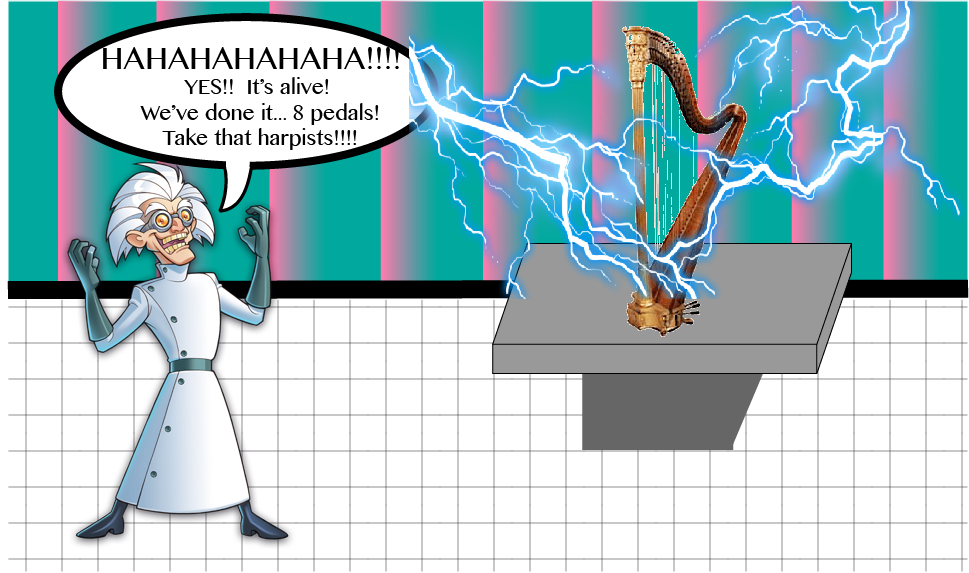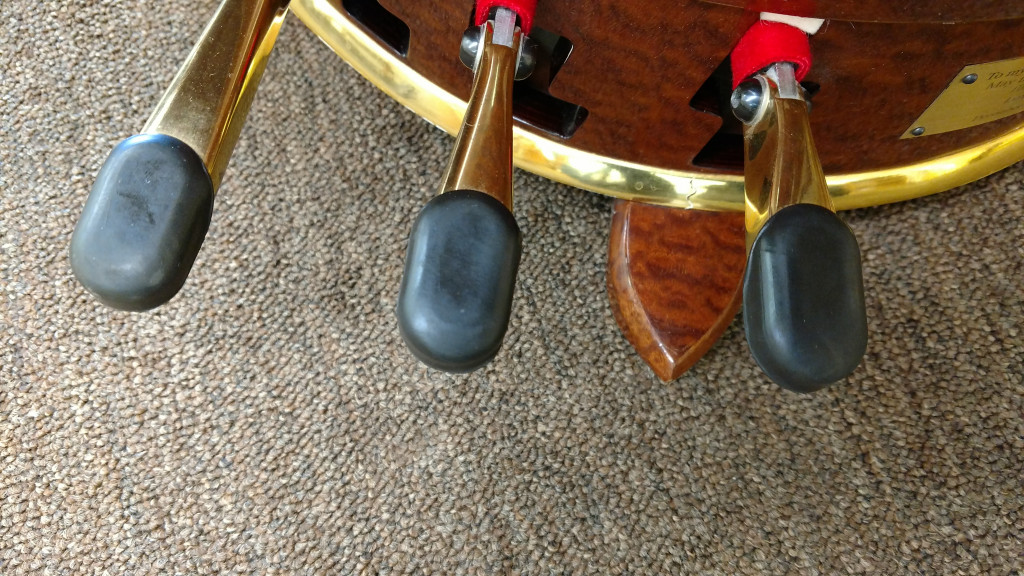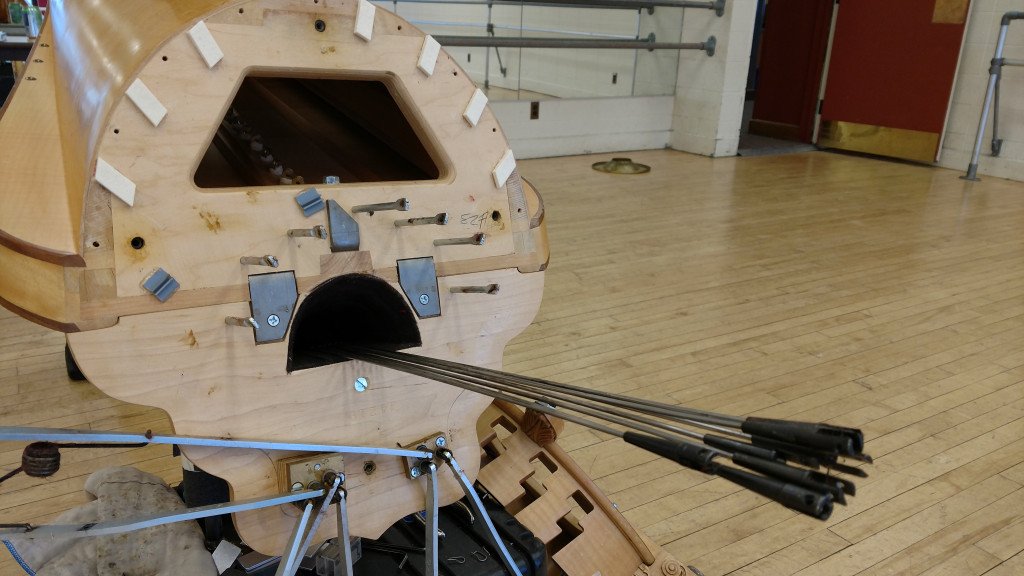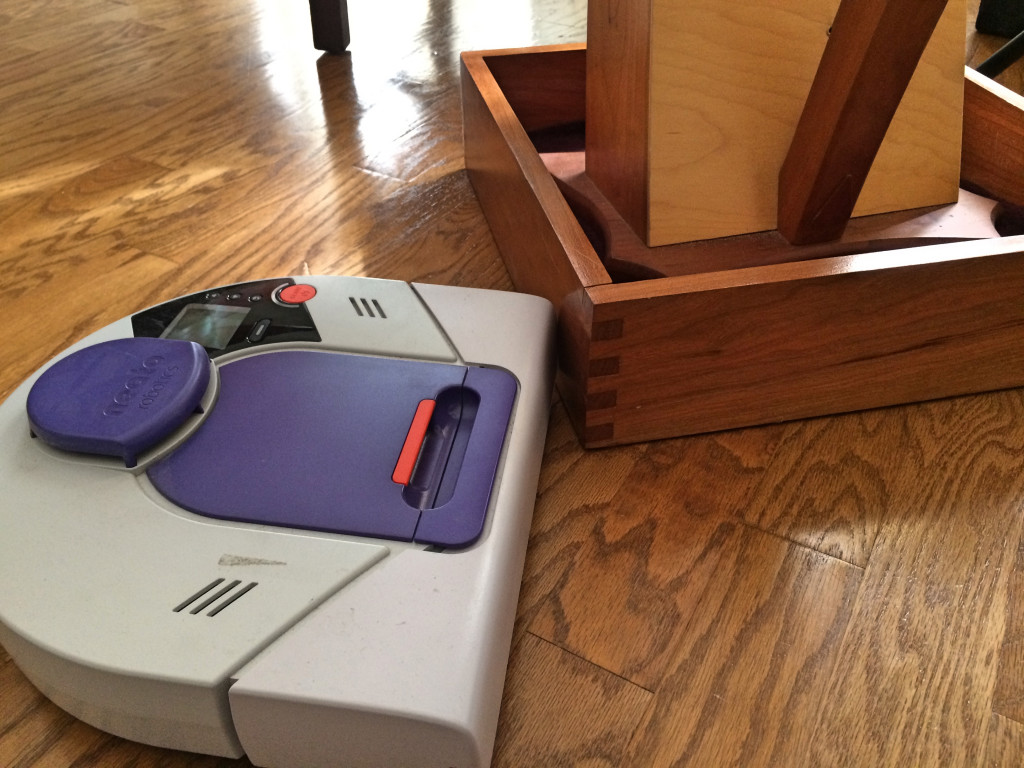Welcome to Bi-Weekly Harp Bits; a blog series of practical history for practical harpists.
Why is history important? According to historian Peter N. Stearns the importance of studying history can be broken into 5 different headings:
- History helps us understand people and societies: How can we understand genius, the influence of technological innovation, or the role that beliefs play in shaping family life, if we don’t use what we know about experiences in the past?
- The importance of history in our own lives: Exploring what historians sometimes call the “pastness of the past”—the ways people in distant ages constructed their lives—involves a sense of beauty and excitement, and ultimately another perspective on human life and society.
- History contributes to moral understanding: Studying the stories of individuals and situations in the past allows a student of history to test his or her own moral sense, to hone it against some of the real complexities individuals have faced in difficult settings.
- History provides identity: Merely defining the group in the present pales against the possibility of forming an identity based on a rich past.
- Studying history is essential for good citizenship: Studying history encourages habits of mind that are vital for responsible public behavior, whether as a national or community leader, an informed voter, a petitioner, or a simple observer.
Read more in Dr. Streans’ 1999 American Historical Association article “Why Study History.”
Harp history is so amazingly interesting!! For our first few visits to the past we will be discussing the role of the pedals, and how they have morphed, multiplied, and made us all dancing fools since ca. 1720!
Pedal #8 – Swell
I’ve never had the opportunity to see an 8 pedal harp in person. For this reason the idea of an 8th pedal at first seemed like a sick joke to me… Something that a mad scientist cooked up in their lab to torture harpists. But, it is no joke! Personally, I feel like I have more than enough to worry about without adding one more pedal to the mix… that being said I have used a page-turning pedal in the past (something I don’t advise to anyone in anything other than the most extreme situations).
The much fabled 8th harp pedal did indeed exist and was part of the manufacturing process for large companies such as Naderman, Erard and Lyon & Healy between ca.1784-1835. The idea of the swell pedal was not new to instrument making around the turn of the 19th century. In fact the first such instrument to employ a swell pedal was the swell organ first built in 1712. This organ had a large sliding shutter on the front of the instrument that allowed for enhanced dynamic and timbre control.
The harp swell pedal came into existence primarily through the work of two of our most recognizable names in harp history: harpist-composer Jean-Baptiste Krumpholz (1742-1790) and 18th century single-action harp maker Jean Henri Naderman (1734-1799). Krumpholz had the idea to add a swell pedal to the concert harp and Naderman had the tools (and resources) to make it happen. The swell shutters were designed to open and close the sound holes in the back of the sound box (as can be seen in the picture) and were used to create dynamic and timbre changes as well as create vibrato like sounds (by swinging the shutter open and closed quickly).
Don’t think these harpists have anything to do with you?? Check out this feature story by Kela Walton from the July/August issue of the Harp Column to learn about your harp heritage!
Proof of specific techniques to utilize this pedal can be seen in the music of both Krumpholtz and Jean-Henri Naderman, who indicated pedal movements through symbols. These symbols can be found in the description from the Naderman/Plane “Méthod” (1800) that can be viewed here: Krumpholz swell pedal markings. English translations of the symbols are given below.
 Open the shutters from the most natural sounding closed position to the most intense.
Open the shutters from the most natural sounding closed position to the most intense.- Keep the shutters open.
- Close the shutters gradually.
- Open and then close the shutters quickly
- Create a sound wave by repeatedly opening/closing the shutters.
So why don’t we still use the swell pedal?
Multiple reasons. The actual effect of these pedals was highly debated at the time of its existence; Bochsa is said to have called the swell pedal effects “horrible” and “pretend.” Also, the hinge placement on the interior of the sound box makes it extremely complicated to replace or repair broken parts, often requiring the soundboard to be completely removed in the process.
With the increased tension, size and power of the double action harp, invented in 1811, the swell pedal slowly fell out of favor. Interested in reading more about the 8th pedal? Check out this great article written by harpist Mike Parker.
Have you ever seen an 8th (or even 9th) pedal on a harp? If harp makers began making instruments with a swell pedal today would you consider playing on one? Comment below, and check back in 2 weeks for more harp history! Happy harping!
















